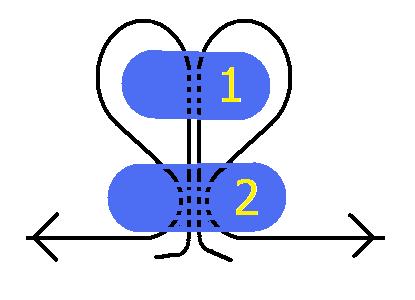Talk:List of sewing stitches
| This article is rated List-class on Wikipedia's content assessment scale. It is of interest to the following WikiProjects: | |||||||||||
| |||||||||||
Reorganizing needed[edit]
Several of the articles under machine stitches link to hand stitching pages. Said pages need to either be separated into two different articles (ie. one straight stitch article for machines, and one for hand sewing) or we should probably adjust how things are listed. Also, most sources consider straight stitches and running stitches to be synonymous. The Running stitch page states they're the same, and the straight stitch one says straight stitch is only a category of stitches, not one in and of itself. Obviously this is also an issue with those pages, but it relates to this one so I'm bringing it up here first. I have all three pages on my watchlist, gonna look up some appropriate sources and then start editing them. Might add merger template to straight and running?
Any thoughts would be appreciated but as this page doesn't have a ton of recent major edits I'm just gonna start going for it. Twiinarmeggedon2 (talk) 16:04, 22 January 2021 (UTC)
It's a start...[edit]
This list was exptracted with minimal editing from an old revision of sewing. It still needs a lot of work. Please help if you can. - PKM (talk) 18:33, 13 June 2010 (UTC)
Plain seam joining stitch[edit]
Here is an illustration of the Plain joining stitch. It is used to join two pieces of fabric in a seam. It is the strongest stitch available that can be done by hand that I know of. The fabric is sewn in two passes. The first pass joins the fabrics at their edges. The fabric is then folded back on itself and the second pass backs up the first pass. Both passes are done with a back stitch. The join is practical by hand as it is done on the edge of the folded fabric, rather than from one side of the fabric to the other. Unlike the running seam or French seam it is stronger than the fabric itself. It will not pull out from unraveling of the fabric. If the second pass thread breaks thru wear under use, the first pass thread holds the seam until it can be repaired. This is the true Plain joining stitch, but the worldly will claim otherwise. My Flatley (talk) 20:43, 9 November 2010 (UTC)
10 basic stitches that you can learn easily with name and meanings[edit]
hip stitch- is named after he hit himself in the hip with a pin. cross stitch- is named after the crucifixion of Christ. satin stitch- satin is name after the legendary founder of ΣςσφΦ or Latino. running stitch- is named after the founder of stitching. lazy daisy stitch- is named after the peace of the world. chain stitch- is named after the founder of stitching go to the jail and handcuff him with use of chain. back stitch- is named after the founder of the word back. feather stitch- is named after he pull the feather of the chicken. blanket stitch- is named after the first maker of the blanket. half stitch- is named after the founder break his needle into HALF when his stitching.
ҖЖҘӝ تح ঈঘছআ ௫௩ Or wish you like it.
Do you like it____________________?
Yes Or No
stitch is awesome[edit]
stitch is one of the awesome you can make if you don't have fun. — Preceding unsigned comment added by 49.147.116.250 (talk) 14:39, 20 February 2014 (UTC)
Types of hand stitches[edit]
- sailmaker's stitch - I have left as a broken link as I think it deserves a short article, which I haven't time or expertise for right now; e.g. see http://oxfordindex.oup.com/view/10.1093/oi/authority.20110803100436925 D A Patriarche, BSc 23:21, 3 February 2017 (UTC) — Preceding unsigned comment added by D A Patriarche (talk • contribs)
TLE[edit]
List down the diffrent stitches 223.25.56.66 (talk) 21:03, 7 November 2022 (UTC)


